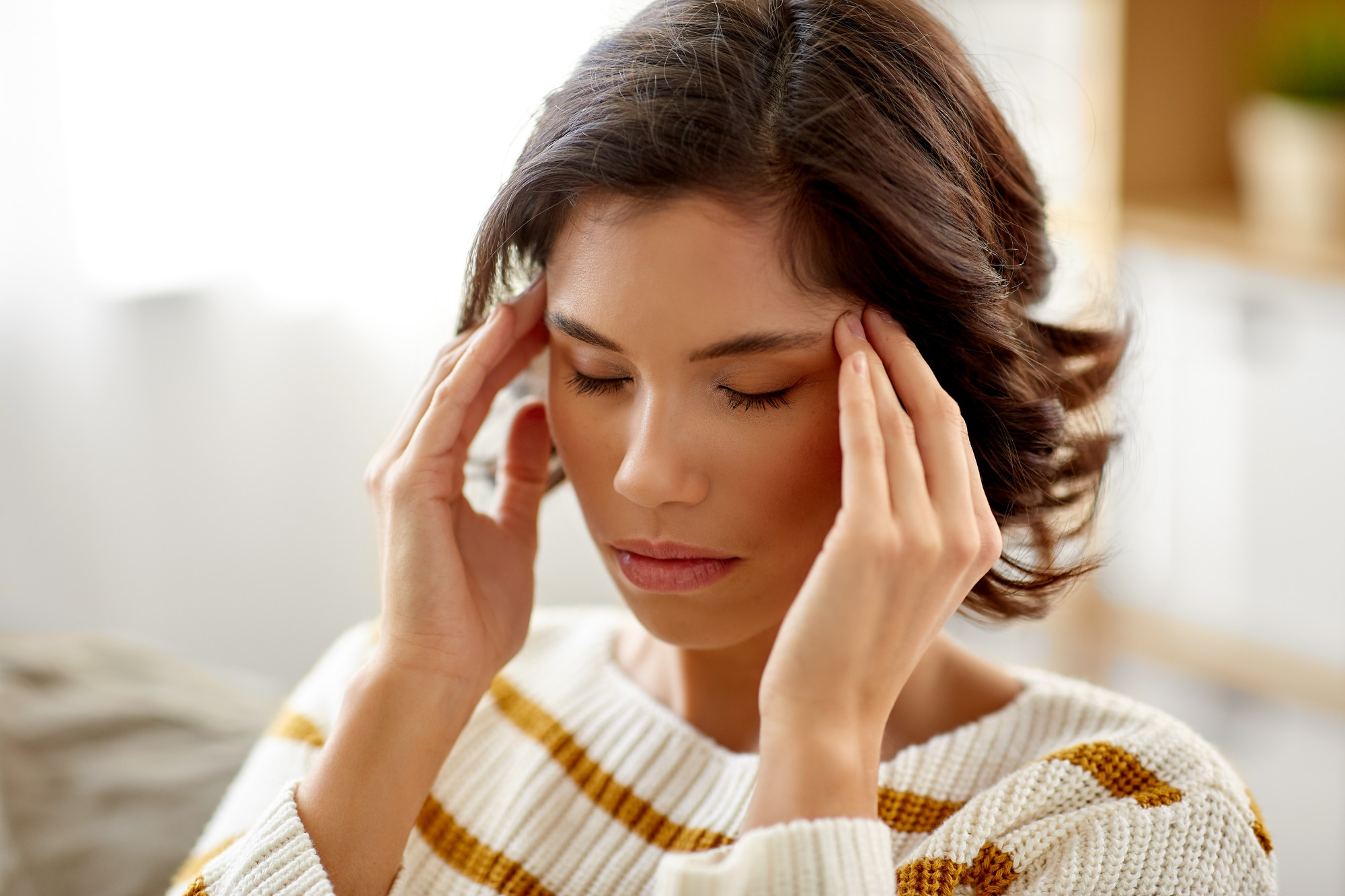-
Call us now
03 9088 8059 -
12 Wellington Parade
East Melbourne VIC 3002 -
Mon - Satday
08:00 to 20:00

When you think of chronic illness, do you think about migraines? If you don’t, you should. People who get migraines live at the whim of these agonizing headaches, which can put them out of commission for days on end.
Unfortunately, doctors don’t understand the root cause of migraines. We’ve unearthed triggers that can start them, but the physiological phenomenon is not understood.
While we don’t know the cause, we do understand the different types of migraines. We’re going over migraine triggers and types below.
What Separates Migraine Headaches from Classic Headaches?
The average person probably gets one regular headache a week, if not more. These are annoying and uncomfortable but are easily treated with over-the-counter painkillers.
A regular headache can involve head pressure, throbbing, a pounding sensation, or a sensitivity to sound. Headaches are linked to many preventable causes like hydration and regular exercise, while migraines aren’t avoidable through lifestyle changes.
While the pain from a headache is distracting, migraine pain is debilitating. Pain is usually located on one side of the head, and the head symptoms are often accompanied by bodily sensations, like nausea or vomiting.
The “aura” and sensitivity to light and/or sound are two telltale signs of migraines. An aura appears as a glow around light sources in people with migraines. It’s almost like what you see when you’re half-awake, and your eyes are still fuzzy.
As we’ll discuss later, not all migraines have auras, but they’re more common than not.
Migraine Triggers
Like we said above, we don’t understand the physical processes that cause migraines. However, there’s been enough research on them to identify common triggers in migraine sufferers.
Hormonal Migraines
Some women get migraines during their time of the month. They can happen before or after the start of your period but usually occur within a 2-3 day window of “day 1.” Men aren’t thought to have hormonal migraine triggers; that’s what the research says right now.
Emotional Triggers
Some people get migraines when they experience certain emotions. These are mostly negative (stress, anxiety, shock, tension, depression) but not always. Some unfortunate people find they can get migraines if they get too excited.
Dietary or Allergic Triggers
You can be in multiple migraine trigger groups. Another example of migraine triggers come from certain food or plant allergies/sensitivities.
Many people report more migraines on days with high pollen or allergen count, like in the middle of spring. Other people may get migraines from scents – like strong perfumes or candles.
There are others who get migraines from eating certain things or getting too dehydrated. Caffeine can cause migraines in some, which is interesting because many migraine medications include caffeine as an active ingredient.
Physical Triggers
Finally, we understand that certain physical symptoms can bring on migraines. People who overwork themselves, don’t get enough sleep or have jet lag can all experience migraines.
Some people report migraine onset when their neck or shoulders are overly tight or if they have historically bad posture. That’s a fact that will make you sit up a little straighter!
While these are common triggers, some people get completely random migraines. These are the hardest kind to prevent. The best course of action for these individuals is to learn the earliest signs of migraines and start treatment ASAP.
Types of Migraines
Some people always get the same kinds of migraines, while others have different migraine “levels.” For example, someone might get a no-aura migraine, which is less intense for them than one with auras. It all depends on the individual.
Complicated Migraines: With Aura
Migraines with auras fall under “complex migraines.” About 25% of migraine sufferers see these rings of light as a warning sign before the migraine pain begins.
Some people will see black spots, experience lines across their vision, or experience other vision changes instead of or in addition to auras. You should mention this to your ophthalmologist next time you see them, so they can note it in the future.
Non-Aura Migraines
Knowing when a migraine is about to start without an aura can be challenging. People who get non-aura migraines have to be very in-tune with their bodies to catch a migraine before it starts.
Unfortunately, these are the most common migraine type. Some people start with non-aura migraines and experience worsening symptoms, including auras, as they age.
Some other uncommon migraine types include:
- Retinal migraines (see an ophthalmologist)
- Hemiplegic migraines
- Silent migraines
You should talk to your doctor about your migraines, how they’re progressing, and any triggers you think may be relevant.
Migraine Treatment
Pills can only do so much for migraines. Medication isn’t preventative. It only treats migraine symptoms.
Getting to the root cause of your migraine trigger (if you know it) is a better way to prevent migraines. People with stress and tension-related triggers should look into ayurvedic massage as a way to help avoid migraines in the future.
If you have hormonal or dietary triggers, adding ancient herbs to your daily routine may give you relief and help evade migraines altogether.
Even if you still choose to take medication for your migraines, ayurvedic treatment can be helpful. This ancient eastern healing modality aims to balance your specific body or “dosha” type, which acts as preventative medicine.
Many doctors will recommend relaxation practices, like massage, as a way how to treat migraines, so that’s a great place to start!
Reducing Migraines
Anyone who suffers from migraines will try anything to treat or avoid them. With the costs of modern medicine rising, many people are turning to holistic providers for migraine treatment help.
Whatever your types of migraines are, our Ayurvedic practitioners will come up with a personalized plan for you. Learn more and schedule an appointment here.
